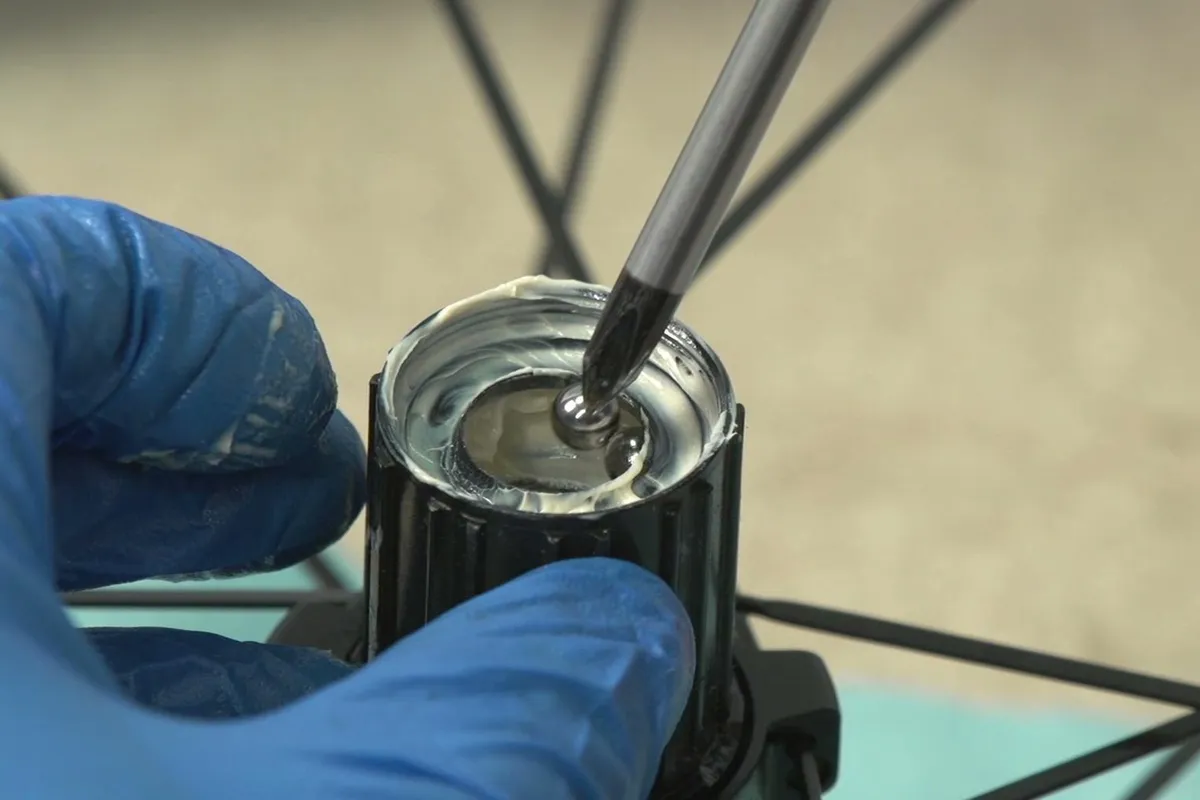Shimano’s long-awaited wireless XTR groupset likely marks the beginning of the end for the brand’s legendary cup-and-cone hubs. As a long-time hub fondler and registered grease-gun botherer, this makes me very sad.
Cup-and-cone bearings have long been synonymous with Shimano’s hubs, but the two wheelsets launched as part of the new XTR M9200 series feature replaceable cartridge bearings instead.
The move isn’t unprecedented – the hubs launched alongside the Shimano CUES drivetrains a couple of years ago are cartridge too – but XTR is a flagship for the brand and, as such, it’s much more significant.
Shimano is pretty consistent about trickling its tech down the groupset tiers, so it’s likely this spells the beginning of the end for cup-and-cone hubs from the brand, on the MTB side at least.
- Read more: Shimano XTR Di2 M9200 review
- Read more: Bicycle bearings: everything you need to know
What’s so great about cup-and-cone anyway?

Cup-and-cone hubs roll on ball bearings trapped in a metal cup by a cone-shaped metal race. The balls can be entirely loose or held in position by a cage.
Either way, the bearings are considered fully serviceable because they can be disassembled for cleaning and regreasing, and individual components can be replaced rather than the entire bearing/race/seal assembly.
Properly looked after with periodic servicing, good-quality cup-and-cone bearings such as those traditionally favoured by Shimano are extremely durable, and they can be adjusted precisely over time as the components wear.

They’re one reason the M540 SPD pedal (and its closely related siblings) is an all-time great, while Dura-Ace road hubs have long been considered a benchmark alongside Campagnolo’s flagship Record components.
Cartridge bearings, by contrast, are a fully self-contained assembly of ball bearings, races and seals.
When a cartridge bearing wears out, it goes in the bin and a new cartridge is pressed into the hub. Some, but not all, cartridge hubs (including the new XTR ones) feature a preload adjustment to remove any play.
Once upon a time, all bicycle bearings were some variation on cup-and-cone, but they are increasingly rare on enthusiast-level bikes. They still exist at the ultra-budget end of the spectrum too, but the quality is often so poor there that you’d be better off with cheap cartridge bearings.
Shimano knows what it’s doing

The PR for new XTR cites performance and easier maintenance as justification for the use of cartridge bearings.
The new hubs are slightly lighter than their predecessors (we’re talking a handful of grams), but I’m a bit sceptical about any performance gains linked directly to the choice of bearings. Cup-and-cone designs typically use bigger balls than equivalent cartridges and roll extremely efficiently as a result. As an aside, the new hubs have a smaller freehub engagement angle, which will impact how they feel on the trail.
The case for maintenance is easier to make. Why? Because if we’re being honest with ourselves, most of us don’t treat our cup-and-cone hubs as well as we could or should.
In theory, we’d all adhere to a strict maintenance schedule, lovingly flushing out our bearings and repacking them with clean grease at regular intervals, and after any rides in particularly harsh conditions.

In reality, few riders do this, and as a result their cup-and-cone bearings often suffer premature wear, for example pitting to the races. While they’re fully serviceable in principle, parts can be costly or hard to obtain, writing off a hub (or wheel) before its time.
Cartridge bearings, on the other hand, can be used to the point of total failure and then replaced, returning a hub’s performance to ‘like-new’.
In a world where disc brakes are the norm and we’re not wearing down our rims every time we brake, it makes a lot of sense to design hubs that aren’t going to get trashed by the typical rider’s lackadaisical approach to maintenance. In our disc-brake dominant reality, wheels can last more or less indefinitely, or at least until you smash your rims by hucking too hard.
I realise I’m undermining my own argument for cup-and-cone here, and I fully acknowledge that it’s as much a philosophical thing as anything else. The type of bearings inside your hubs makes zero difference to your ride, but as part of the ownership experience, I appreciate maintenance tasks that are inherently satisfying.
Pumping fresh grease into needy bearings is one of those small acts of bike-based mindfulness that enriches the sport for tech nerds like me. It makes me feel more connected to my bike, and it’s a small act of defiance in a world of disposable goods.
Can I still get my cup-and-cone fix?

Hub fanciers need not panic just yet.
Most of the Shimano range is still cup-and-cone on both the MTB and road side, and components from the outgoing XTR M9100 groupset will be widely available for years to come.
Likewise, Shimano has sold so many hubs over the years that cup-and-cone will never truly die out, although new freehub standards mean older models are increasingly being made redundant.
Beyond Shimano, your choice of premium cup-and-cone hubs is severely limited.
Campagnolo continues to use cup-and-cone hubs for all but its cheapest wheelsets, but the range covers road and gravel only, and the Italian maker seems to have exited the standalone hubs market entirely.
Sister brand Fulcrum caters to all disciplines and is, to my knowledge, the only other high-end maker offering mountain bike wheels with cup-and-cone hubs.
The writing is clearly on the wall here, and I wouldn’t be surprised to see new cup-and-cone hubs die out completely in the next few years – including on the road side.
As ever, we can’t fight the relentless march of progress, but like rim brakes and 2x drivetrains, I hope beautifully made cup-and-cone hubs never disappear.




